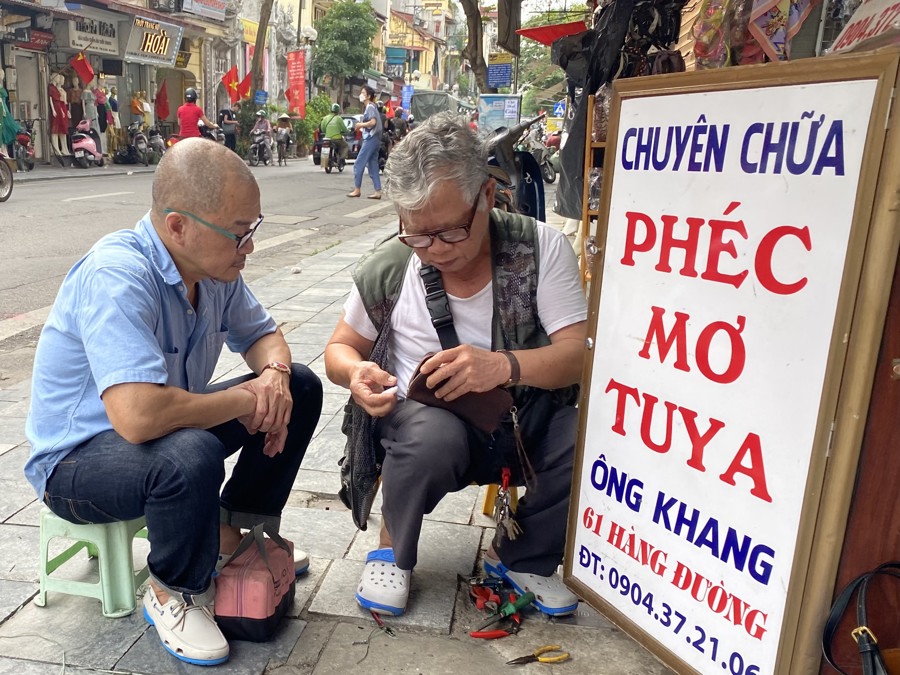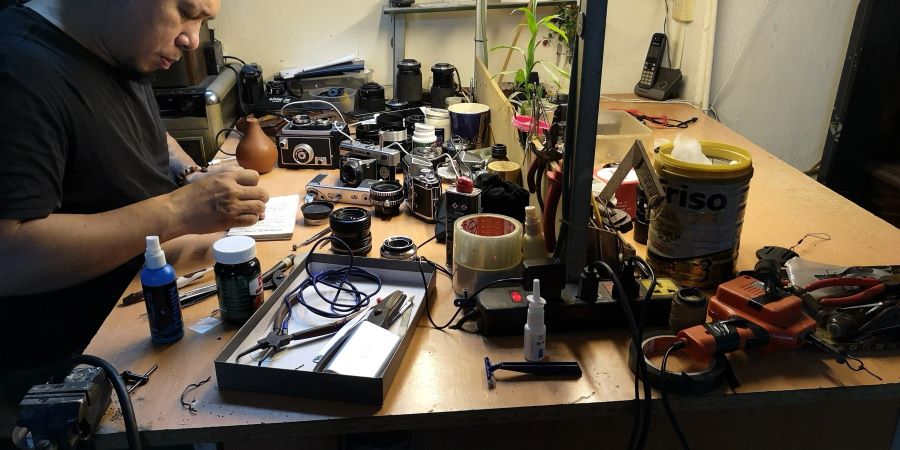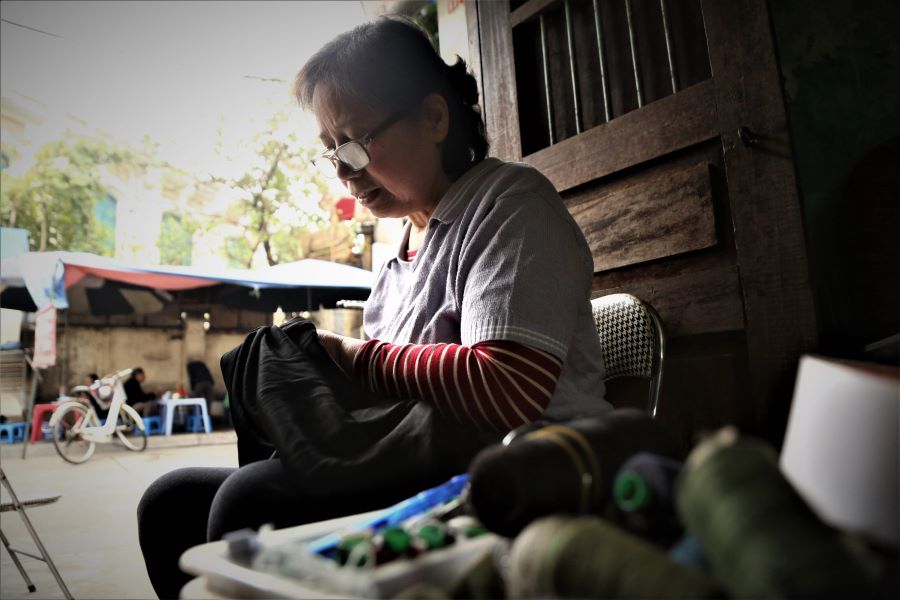
Early in the morning on a summer's day in Hanoi, Nguyen Huu Khang, a zip repairer, places the sign on the pavement in front of the alleyway at 61 Hang Duong Street in
Hanoi’s Old Quarter. Deep inside the small alleyway is his own home and zip repair shop for more than 60 years.
| Nguyen Huu Khang repairs a wallet zip for a customer. Photo: Ngoc Hien |
The old man said that when he was young he used to sit on a small stool with his tools at the entrance to the alley and wait for customers to come in. Years ago, as demand declined, his shop moved inside the alley house. There used to be many repairmen like him on the streets of Hang Ngang and Hang Duong, but now there are only two or three left.
Knowing that his house is deep in a dark alley with no parking, Khang has hung a small sign on the street with his phone number. Customers call him and he comes out to pick up their orders.
The old man, who describes himself as a meticulous, attentive and professional zip repairer, taught his eldest son the trade. "I passed the job on to my son and daughter-in-law, but they also repaired cameras, USBs, and other electronics at No.21 Hang Mam Street. I often tell my customers that if they can't call me, they can go there and place their orders with my son," he said.
Nearby, To Hong Phan's barber shop on Hang Ruoi Street in Hoan Kiem District is packed with customers who have made their way, one by one, through a 10-metre-long alleyway. The shop can only accommodate three customers at a time, while others who arrive later have to wait outside the "tunnel mouth".
| Barber To Hong Phan and his son. Photo: Hanoi Online |
Phan, 59, has been cutting hair since he was 16. After being discharged from the army, Phan worked as a sidewalk barber. Almost 10 years ago, he decided to move his shop into his own house because the sidewalks were too cramped for pedestrians.
Since the move, Phan said the number of customers has been stable. On average, his shop serves 30-40 customers a day, and even more during Tet and holidays. He charges between VND50,000 and VND60,000 or US$1.9 to US$2 per haircut.
"I used to worry that if I moved to this deep alley, there would be fewer customers. Luckily, wherever I go, customers follow. Without a signboard, the shop is still crowded, and some have to make appointments by phone from far away to avoid waiting too long," Phan said.
According to statistics, Hoan Kiem District has more than 1,000 small alleyways, most of which are very narrow - just wide enough for one person to pass through and hardly exposed to sunlight all year round. A typical house in these alleyways usually has an area of 15-20 square meters.
In Hanoi's Hai Ba Trung District, the seat of Nguyen Ngoc Long's old-fashioned camera repair shop is his own house, which is tucked away in an alleyway more than 10 meters long on Hoa Ma Street.
| Nguyen Ngoc Long's home and camera repair shop. Photo: Dan tri |
Long's family has been in the business for four generations. In the past, the shop did not have a sign but was still sought after by film and digital camera users. At the time, there were few repair shops in the city and such 'gems' were orally transmitted.
The number of customers coming to Long's workshop is down from previous years, but it is still enough for him to make a living and keep his job. The 47-year-old admitted that he is facing more difficulties but has no intention of giving up what he has been doing since middle school. In addition, the demand for film cameras gradually returned, and many customers asked him to replace parts and accessories or to revive entire cameras, so he continued to provide the service.
"As long as there are customers, I'll still be repairing cameras. And it is also a family business, so I want to carry on," said Long.
| Nguyen Thi Hong has been spending over 40 years yarning clothes in Hanoi. Photo: Dan Tri |
For the past 45 years, the people of Thanh Mien Alley in Quoc Tu Giam Street, Dong Da District, have been familiar with the image of Nguyen Thi Hong, 72, a small woman sitting in front of her tiny house, quietly darning clothes. Many customers believe Hong is the last person in Hanoi to still do this job.
As the grey-haired, darning woman recalled, her husband's mother had set up a tailoring business in 1954. When Hong became her daughter-in-law, she was taught the craft, which she has maintained to this day.
"In the past, people had few clothes, so if torn, they would be mended. Nowadays there are plenty of clothes, but they're all expensive. If they have one or two tears, the owners try to have them darned instead of throwing them away," she said.
After almost half a century of working with needles and thread, Hong has never thought of retiring, even though her income is not high. Not only does she want to keep the traditional craft alive, but she also sees herself as a "memory patcher" whose hobby is reviving old, treasured clothes.






- Cultural fair hosted in Tokyo to showcase Vietnam and other nations' traditional traits
- New book celebrates Hanoi's architectural beauty through the ages
- Old tales from the subsidy era told at Truc Bach Night
- Hanoi’s downtown: Ultimate destination for pho lovers
- Architectural treasures in the Creative City
- Hanoi ao dai festival for tourism promotion




